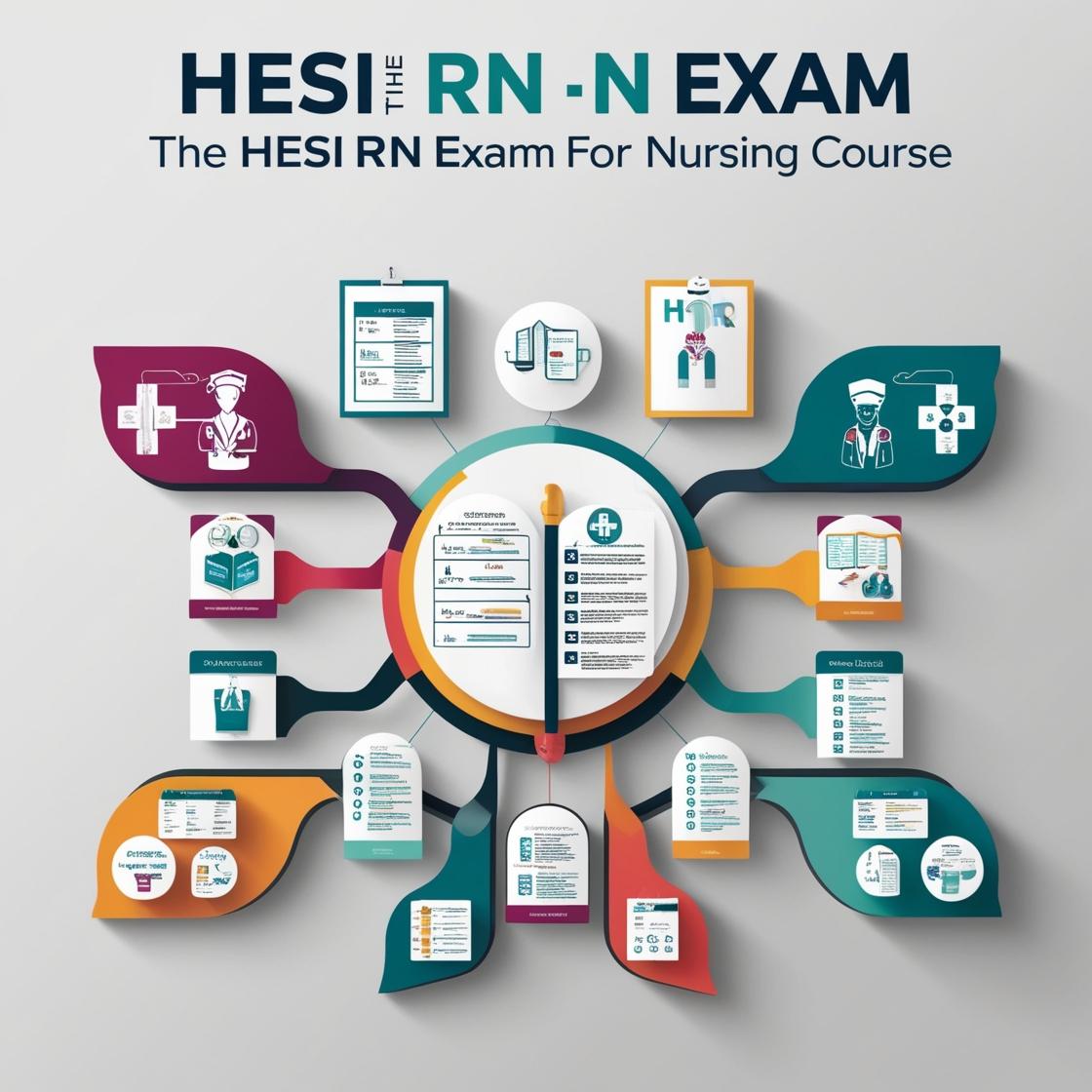HESI RN
HESI RN Exit Exam Capstone
1. A client with hyperthyroidism is admitted for total thyroidectomy. What is the nurse's priority post-operative intervention?
- A. Monitor the client's calcium levels for hypocalcemia.
- B. Monitor for signs of respiratory distress.
- C. Administer oral calcium supplements.
- D. Elevate the head of the bed to 45 degrees.
Correct answer: A
Rationale: The correct answer is to monitor the client's calcium levels for hypocalcemia. After a total thyroidectomy, there is a risk of accidental removal or damage to the parathyroid glands, leading to hypocalcemia. This complication can manifest within the first 24-48 hours post-op. Monitoring calcium levels is crucial to prevent serious complications such as tetany or seizures. While monitoring for respiratory distress is important, it is not the priority in this case. Administering oral calcium supplements should only be done based on the healthcare provider's prescription and after assessing the client's calcium levels. Elevating the head of the bed to 45 degrees is beneficial for respiratory function but is not the priority intervention for a client at risk for hypocalcemia post-thyroidectomy.
2. A client receiving total parenteral nutrition (TPN) reports nausea and dizziness. What action should the nurse take first?
- A. Check the client's blood glucose level.
- B. Check the client's vital signs and blood pressure.
- C. Decrease the infusion rate of TPN.
- D. Administer antiemetic medication as prescribed.
Correct answer: B
Rationale: When a client receiving total parenteral nutrition (TPN) reports symptoms like nausea and dizziness, the first action the nurse should take is to check the client's vital signs and blood pressure. This assessment helps determine the client's overall stability and can provide crucial information to guide further interventions. Checking the blood glucose level (Choice A) may be relevant but is not the priority in this situation. Decreasing the infusion rate of TPN (Choice C) may be necessary but should be based on assessment findings. Administering antiemetic medication (Choice D) should not be the initial action without first assessing the client's vital signs.
3. A client asks the nurse to call the police and states: 'I need to report that I am being abused by a nurse.' The nurse should first
- A. Focus on reality orientation to place and person
- B. Assist with the report of the client's complaint to the police
- C. Obtain more details of the client's claim of abuse
- D. Document the statement in the client's chart with a report to the manager
Correct answer: C
Rationale: The correct initial action for the nurse is to obtain more details about the client's claim of abuse. This will help the nurse better understand the situation before proceeding with any further actions. Option A is incorrect as reality orientation is not the priority in this situation. Option B is premature as more details are needed first. Option D is not the immediate step as gathering information should come before documentation and reporting.
4. A client with a seizure disorder is prescribed phenytoin. What is the most important teaching the nurse should provide?
- A. Take phenytoin with antacids to reduce stomach upset.
- B. Maintain a consistent dosing schedule to prevent seizures.
- C. Monitor for excessive drowsiness and dizziness.
- D. Take the medication at bedtime to reduce seizure risk.
Correct answer: B
Rationale: The most important teaching the nurse should provide to a client prescribed phenytoin is to maintain a consistent dosing schedule to prevent seizures. Phenytoin is an antiepileptic drug, and missing doses can increase the risk of seizures. Option A is incorrect because antacids can interact with phenytoin and reduce its absorption. Option C is important but not the most critical teaching as compared to maintaining a consistent dosing schedule. Option D is incorrect because the timing of phenytoin administration should be consistent rather than specifically at bedtime.
5. A client with heart failure is prescribed furosemide. The nurse notes that the client's potassium level is 3.1 mEq/L. What is the nurse's priority action?
- A. Administer a potassium supplement
- B. Encourage the client to eat potassium-rich foods
- C. Hold the next dose of furosemide
- D. Increase the client's fluid intake
Correct answer: A
Rationale: A potassium level of 3.1 mEq/L is considered low, indicating hypokalemia. Administering a potassium supplement is the nurse's priority action to prevent complications such as cardiac arrhythmias associated with low potassium levels. Encouraging the client to eat potassium-rich foods is beneficial in the long term but may not rapidly correct the low potassium level. Holding the next dose of furosemide may worsen the client's heart failure symptoms. Increasing the client's fluid intake is not the priority action in this situation; addressing the low potassium level takes precedence to prevent potential serious complications.
Similar Questions

Access More Features
HESI RN Basic
$89/ 30 days
- 50,000 Questions with answers
- All HESI courses Coverage
- 30 days access @ $89
HESI RN Premium
$149.99/ 90 days
- 50,000 Questions with answers
- All HESI courses Coverage
- 30 days access @ $149.99
